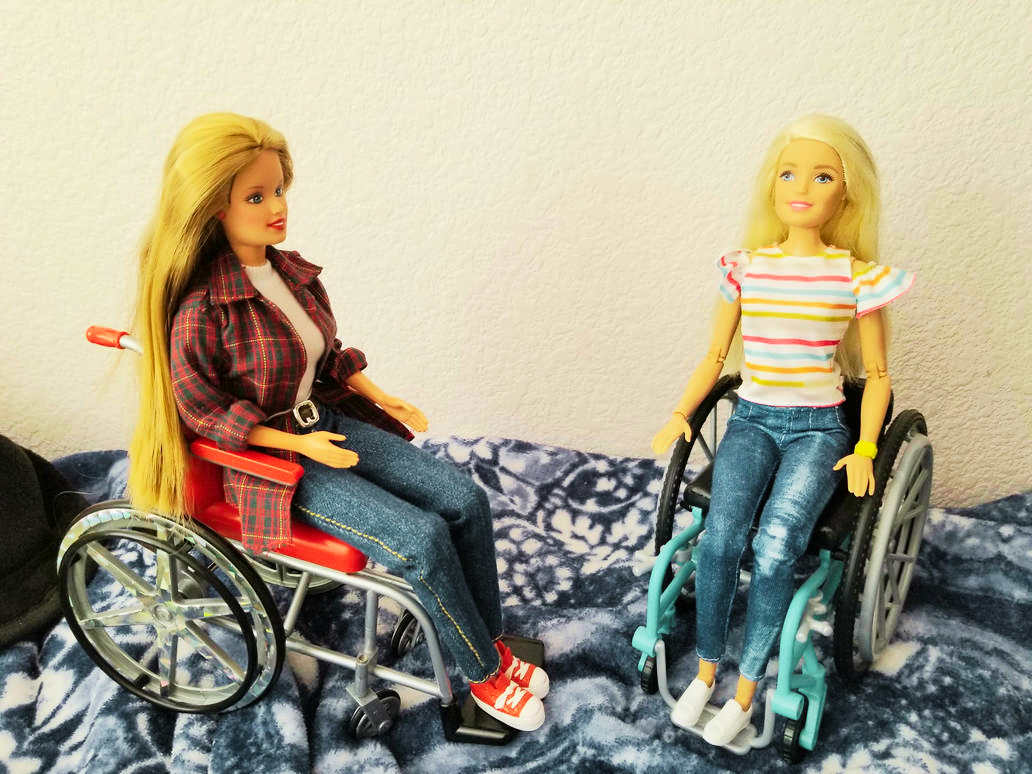Introduction
Fashion Doll Wheelchair In recent years, the world of toys has become more diverse, and inclusive play has become a priority for parents, educators, and manufacturers alike. Fashion Doll Wheelchairs and adaptive accessories are an inspiring step toward creating toys that reflect the diverse world children see around them. These adaptive toys don’t just expand the world of fashion dolls—they offer a vital way for kids to learn empathy, acceptance, and kindness from a young age.
Why Inclusive Play Matters
Inclusive play allows children to learn and grow in an environment exposed to different abilities, cultures, and ways of life. Children develop empathy when playing with dolls and accessories that represent various physical abilities. Toys can be powerful tools, showing children that everyone has value, regardless of physical differences.
Evolution of Fashion Dolls
Fashion dolls have come a long way from their initial designs. What started as a symbol of a very narrow beauty standard has transformed into dolls of different ethnicities, body types, and physical abilities. This evolution didn’t happen overnight; it reflects societal shifts toward embracing diversity and valuing everyone for who they are.
The Introduction of Wheelchairs and Adaptive Accessories
The addition of wheelchairs, prosthetics, and other adaptive accessories marked a significant milestone. Dolls with these accessories started appearing in the 2010s, thanks to forward-thinking companies like Mattel, which began integrating diverse characters into its Barbie lineup. Today, these accessories have become essential parts of the toy industry.
Types of Adaptive Accessories Available for Fashion Dolls
Adaptive accessories have opened new avenues in doll play, reflecting real-life diversity. Here are some of the most popular adaptive accessories available:
Wheelchairs
Wheelchairs are one of the most common adaptive accessories for dolls, allowing children to role-play scenarios with mobility limitations.
Prosthetics and Mobility Aids
Dolls now come with prosthetic arms, legs, and mobility aids, representing kids who use these in real life.
Vision and Hearing Aids
Vision and hearing aids offer representation for children with sight or hearing impairments, allowing them to see themselves in the toys they play with.
Adaptive Clothing
Adaptive doll clothing, designed to be easy to put on and take off, ensures accessibility for children struggling with traditional doll clothing.
Benefits of Adaptive Accessories for Children
Dolls with adaptive accessories help children learn about diverse abilities. For kids with disabilities, seeing dolls that look like them can be confidence-boosting. They’re no longer alone in their experiences—someone, even if it’s a toy, shares them.
How Adaptive Fashion Dolls Inspire Empathy
When children engage with adaptive dolls, they appreciate the value of differences. This exposure can reduce prejudice and foster empathy as children learn to see the world differently.
Popular Brands Leading in Adaptive Doll Accessories
Several brands have taken the lead in producing adaptive fashion dolls:
Barbie and Mattel
Mattel has made strides with its wheelchair and prosthetic options in the Barbie lineup, creating an extensive range of accessories representing various abilities.
American Girl
American Girl has long been known for its customizable dolls, but it has also expanded into adaptive accessories, including wheelchairs, crutches, and hearing aids.
Other Emerging Brands
Several newer brands focus on inclusive representation, filling gaps with creative adaptive options for their dolls.
Top Adaptive Accessories for Fashion Dolls
If you’re considering an adaptive doll for a child, some popular choices include:
- Wheelchair sets complete with ramps
- Prosthetic limb kits that can be attached and removed
- Vision aid kits with mini glasses and eye patches
- Hearing aids for both ears, adjustable to fit different doll types
The Educational Role of Adaptive Accessories
Fashion Doll Wheelchair adaptive accessories aren’t just for play but educational tools used in classrooms. Teachers use these dolls to create lesson plans that help students understand and respect disabilities. These activities make empathy-building more interactive and impactful.
Supporting Children with Disabilities Through Play
For children with disabilities, seeing themselves represented in dolls can be transformative. Many parents and educators report that adaptive dolls help children feel seen and understood. This validation is a vital part of developing a positive self-image.
Building Awareness in Kids Without Disabilities
Inclusive dolls benefit all children by comfortably and naturally introducing them to disabilities. Kids without disabilities can ask questions, develop empathy, and foster understanding, helping build a kinder generation.
Future of Adaptive Toys in the Market
As demand for diverse and inclusive toys grows, toy companies are responding by creating more adaptive options. The future looks promising, with the potential for even more specialized accessories to represent a broader range of abilities and needs.
Practical Tips for Parents and Educators
When selecting adaptive dolls, consider the child’s age and interests. Additionally, make playtime inclusive by introducing books, activities, and discussions reinforcing empathy and respect.
Conclusion
Fashion Doll Wheelchair Adaptive fashion dolls and accessories open a world of inclusive play that fosters empathy and understanding among children. These toys create a bridge toward acceptance and inclusivity by allowing kids to explore differences hands-on. Let’s encourage children to celebrate diversity in their toys and the world around them.
FAQs
Why are adaptive dolls important for children?
Adaptive dolls allow children to see diverse representations, fostering empathy and inclusiveness through play.
What are the most popular adaptive accessories for dolls?
Some top adaptive accessories include wheelchairs, prosthetics, hearing aids, and adaptive clothing.
Do adaptive toys help children with disabilities?
Yes, they boost confidence and create a sense of validation by representing children’s experiences.
Which brands offer adaptive accessories for fashion dolls?
Brands like Barbie, American Girl, and smaller inclusive brands offer various adaptive accessories.
How can I introduce adaptive dolls to my child?
Start by discussing diversity, then introduce the doll as a friend who uses unique accessories, encouraging curiosity and understanding.
For more information, visit my blog:-zisbrand.com

